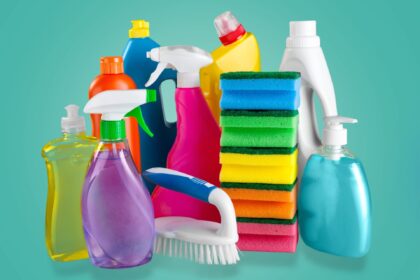In the perpetual quest for personal freshness, the application of underarm deodorant stands as a daily ritual – a shield against the encroachment of unwanted odors. Yet, as we go about our lives combating the hustle and bustle, many remain oblivious to the potential pitfalls within our deodorant routine.
Unbeknownst to most, seemingly innocuous habits may be contributing to an unexpected adversary: clogged ducts in our underarms. The result? A stubborn persistence of body odor that defies our best efforts.
This investigation delves into the complexities of the underarm odyssey, unraveling the mysteries behind the tenacity of unwanted smells and shedding light on the often-overlooked factors leading to clogged ducts.
Picture this: despite your meticulous daily hygiene routine, you find the stink clinging obstinately, rendering your efforts seemingly futile. The culprit may not be the deodorant itself but rather the routine habits you’ve unknowingly adopted.
In this comprehensive exploration, we aim to expose five routine missteps that might have been woven into your deodorant application ritual for as long as you can remember. It’s time to reevaluate, to scrutinize our daily practices, and to bid farewell to the habits that inadvertently sabotage our pursuit of a perpetually fresh self.
Through this journey, we endeavor to guide you toward a liberating underarm experience, unveiling the secrets to a renewed sense of confidence and olfactory triumph. So, join us as we navigate the labyrinth of underarm care, leaving no stone unturned in our quest to banish the stink that seems to stick around forever.
Finding A Healthy Deoderant: Decoding the Ingredients
While our pursuit of freshness leads us down the aisles of countless deodorant options, it’s crucial to turn a discerning eye towards the ingredients lurking within these seemingly innocuous products. Many store-bought deodorants contain a slew of chemicals that, over time, could pose potential risks to our health. Awareness of these ingredients is the first step toward making informed choices for our underarm care.
1. Aluminum Compounds
One of the most common and controversial ingredients found in deodorants is aluminum. Aluminum compounds, such as aluminum chlorohydrate and aluminum zirconium, are frequently included for their antiperspirant properties. These compounds work by forming a temporary plug within sweat ducts, reducing the flow of perspiration.
However, studies have suggested a potential link between aluminum exposure and health issues, including breast cancer and Alzheimer’s disease. While the scientific community continues to investigate these connections, individuals may choose to err on the side of caution and opt for aluminum-free alternatives.
2. Parabens: Preserving More Than Just Freshness
Parabens, widely used as preservatives in cosmetics, including deodorants, are another cause for concern. These synthetic chemicals, with names like methylparaben and propylparaben, help extend the shelf life of products by inhibiting the growth of bacteria and mold.
Research has indicated that parabens may disrupt hormone function by mimicking estrogen, a hormone that regulates various bodily functions. The potential for hormonal disruption raises questions about the long-term effects of paraben exposure, especially considering the proximity of these deodorants to the breast tissue.
3. Phthalates: Fragrance with a Hidden Cost
The elusive term “fragrance” on many deodorant labels often conceals a group of chemicals known as phthalates. These compounds, used to enhance the scent of the product, have been associated with endocrine disruption and reproductive system interference.
As we diligently swipe on our favorite scented deodorants, it’s crucial to consider the potential risks posed by these hidden ingredients. Opting for deodorants that disclose the specific components of their fragrance can empower consumers to make choices aligned with their health priorities.
4. Triclosan: The Antibacterial Quandary
Triclosan, an antibacterial agent added to some deodorants for its odor-fighting properties, has come under scrutiny for its potential impact on both human health and the environment. This compound may contribute to antibiotic resistance, a growing global health concern, while also accumulating in water systems and affecting aquatic life.
In our pursuit of personal freshness, it’s essential to weigh the immediate benefits of triclosan against the broader consequences, prompting a reconsideration of our deodorant choices for the sake of both personal and environmental well-being.
5. Artificial Colors and Allergens: Deceptive Hues and Hidden Irritants
The vibrant colors that often characterize deodorants may seem harmless, but artificial colors can be derived from potentially harmful sources. Additionally, certain deodorants may contain allergens like fragrances and preservatives, triggering skin irritation and allergic reactions.
Individuals with sensitive skin or allergies should be particularly vigilant when selecting deodorants, opting for those with minimal artificial additives and potential allergens to prevent skin discomfort and adverse reactions.
Navigating the Deodorant Aisle
As we navigate the labyrinth of deodorant options, it’s clear that an informed consumer is an empowered consumer. Understanding the potential dangers associated with certain ingredients empowers us to make choices aligned with our health and well-being. Fortunately, the market now offers a plethora of alternatives, ranging from natural, organic options to homemade deodorant recipes, enabling us to embrace freshness without compromising on safety.
Mistake 1: Know the difference between deodorant & antiperspirant
Antiperspirants and deodorants are not the same and this is something you should be aware of. While antiperspirants reduce sweat by creating a sweat duct plug, deodorants reduce stink by killing some of the bacteria that cause body odor. Note that deodorants do not reduce sweat. Hence, it is important to understand what you need and buy a formula accordingly.
Mistake 2: Applying deodorant just before heading out
Do you apply deodorant just before heading out for the day? Well, this is a common mistake that should be avoided. They are the most effective when there is minimal moisture/sweat and therefore, it is best to apply them just before you sleep. Yes! Take a shower before bed, dry the skin, and put on the deodorant to make the most of it.
Mistake 3: Not moisturizing armpits regularly with lotion or oil
Like every part of the body, it is important to moisturize your armpits. By doing so, you can make the scent of your deodorant last for long. For best results, apply a moisturizer to the armpit before spraying the deodorant. You can either use a moisturizing lotion or a natural moisturizer like coconut oil. Leave it for five minutes and then use the deodorant.
Mistake 4: Using deodorant that doesn’t suit your skin type
Most of the time, we select deodorants solely based on their scent. While fragrances play a key role, it is of the utmost importance to choose one based on your skin type. Avoid formulae that have alcohol, baking soda, aluminum-based salts, propylene glycol, and Quaternium-15 on the label. Instead, choose ones with soothing ingredients like shea butter, aloe vera etc.
Mistake 5: Applying Deodorant to Freshly Shaved Skin
Freshly shaved skin, with its open pores and heightened sensitivity, can react adversely to certain deodorant ingredients, leading to discomfort and irritation. Deodorants, especially those with alcohol, can intensify irritation, causing redness and a stinging sensation.
The alcohol, while ensuring quick drying, can exacerbate the sting on freshly shaved skin, leading to potential dryness and flakiness. Additionally, the chemical composition of deodorants can unpredictably interact with micro-abrasions from shaving, potentially causing inflammation and discomfort.
To mitigate these risks, it’s advisable to wait at least 10 to 15 minutes post-shave, allowing your skin to recover and pores to close. Alternatively, consider deodorants labeled “alcohol-free” or formulated for sensitive skin.
Before reaching for that deodorant immediately after shaving, pause, let your skin recover, and choose a product that nurtures the health and well-being of your delicate underarm skin. Stay tuned for our exploration of natural and homemade deodorant alternatives in the next part of our series.
All Natural DIY Deoderant That Actually Works
Supplies:
- mixing bowl
- air tight container
Ingredients
- ½ cup baking soda you can use less when starting out if it irritates you
- ½ cup arrowroot powder
- 5 tbsp coconut oil
- 20 drops tea tree essential oil or another essential oil with antibacterial properties
Instructions:
- Mix baking soda and arrowroot together. (Hand or stand mixer works best)
- Add the coconut oil and essential oils. Mix well.
- Pour into clean air-tight jar (Homemade deodorant will last up to two years in an airtight container.)
- Use a popsicle stick to get the deodorant out of the container and transfer to your finger. Make sure you use enough under your arms to keep you “sure” all day long. A pea-size amount is usually good.
Notes:
- Consistency: This deodorant changes consistency depending on the temperature. In cold climates, it can be pretty hard to get out. If that’s the case for you, I recommend storing it by the shower and allowing the steam to warm it before applying. If you live in a warm climate and the deodorant is too liquidy, store it in a cool cupboard to thicken it up.






